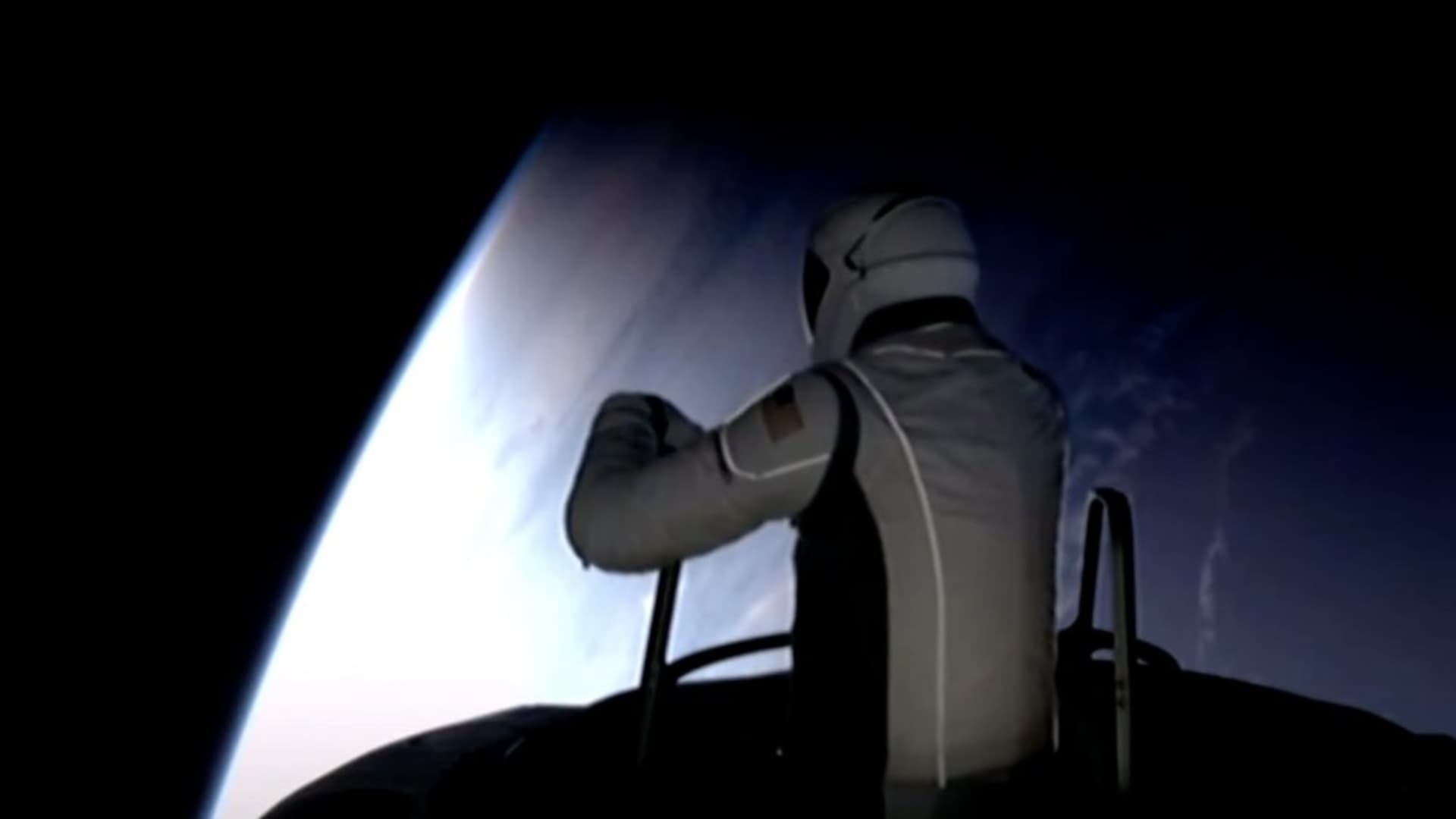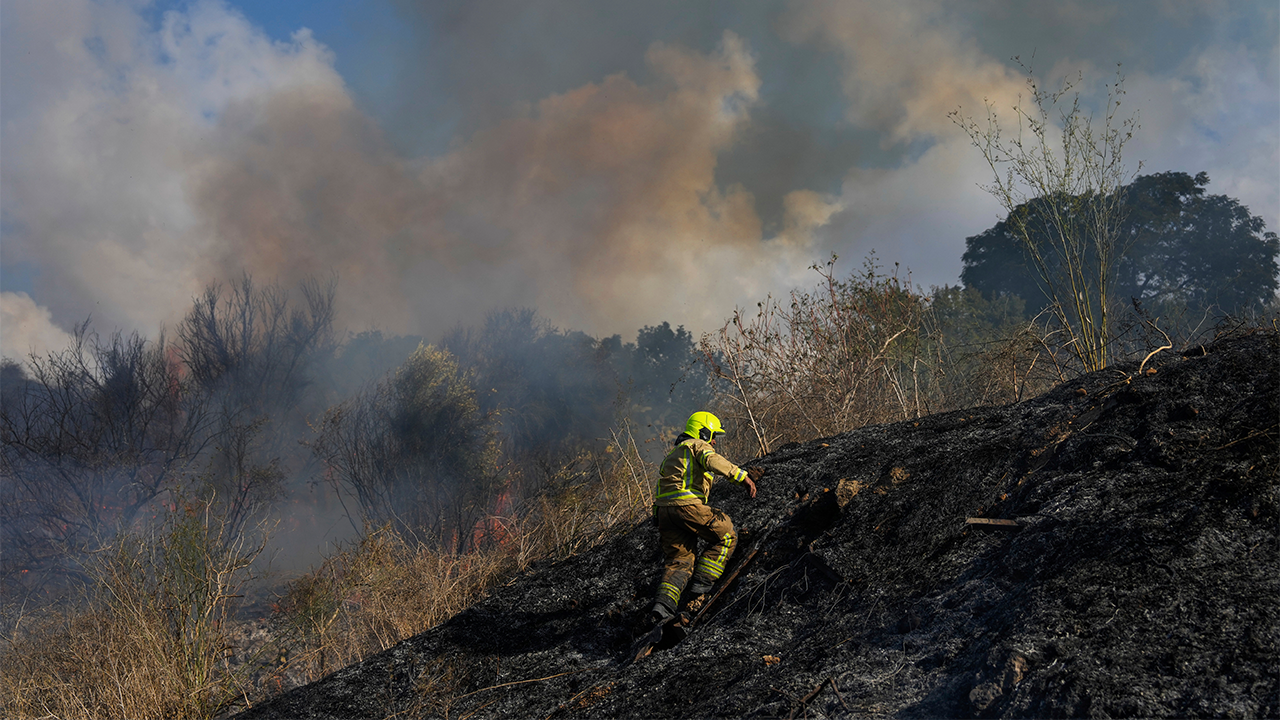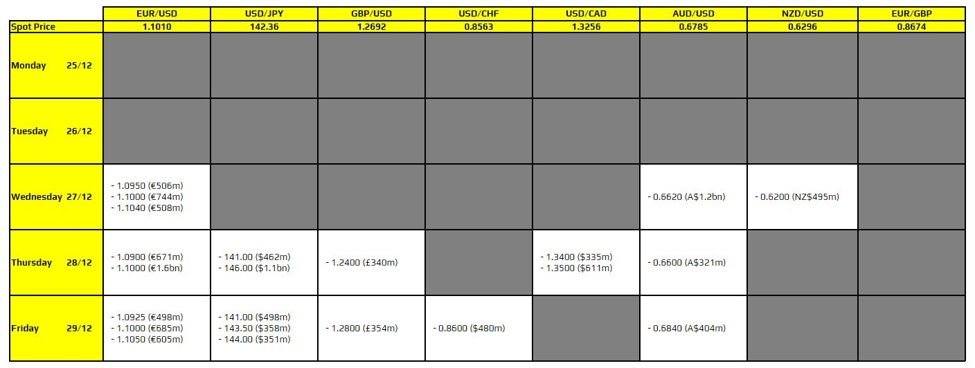Polaris Dawn commander Jared Isaacman emerges from SpaceX’s Dragon capsule during a spacewalk on Sept. 12, 2024.
SpaceX
A SpaceX capsule carrying four private citizens splashed down off the coast of Florida before dawn at 3:36 a.m. ET on Sunday morning, ending a historic mission that included the world’s first all-civilian spacewalk.
Billionaire entrepreneur Jared Isaacman, retired Air Force Lt. Col. Scott “Kidd” Poteet and SpaceX engineers Sarah Gillis and Anna Menon, returned to Earth in a Crew Dragon capsule, splashing down off the coast of Dry Tortugas, Florida, in the Gulf of Mexico.
“Polaris Dawn we are mission complete,” operators announced over the crackle of a radio as recovery vessels made their way to the capsule bobbing in the nighttime sea.
A video posted on X captured the passengers emerging jubilant from the capsule, cheering, waving and hugging staff as they touched solid ground for the first time in five days.
The Polaris Dawn flight marked the fifth private mission for SpaceX’s Crew Dragon capsule. It was also the company’s most ambitious expedition, as the crew members and their spacecraft executed several risky maneuvers.
Chief among them was the all-civilian spacewalk that took place on Thursday. Isaacman and Gillis exited the Dragon capsule on a tether, each spending around 10 minutes out in the vacuum of space. The duo spent the spacewalk conducting mobility tests in their newly designed spacesuits.
The outing was a risky undertaking, because the Dragon capsule does not have a pressurized airlock. This meant that all four members of the Polaris Dawn mission wore spacesuits during the spacewalk, and the entire capsule was depressurized to vacuum conditions.
Completion of the spacewalk was a major milestone in the history of human spaceflight. Previously, only astronauts from government space agencies had conducted spacewalks to build or upgrade space stations in orbit, repair satellites and complete science experiments.
Earlier in the mission, the Polaris Dawn crew flew to an orbital altitude of 870 miles above Earth’s surface, the highest humans have reached since the final Apollo moon mission in 1972.
At that time, the capsule was distant enough to pass through part of the Van Allen radiation belt, a zone of high-energy radiation particles trapped by Earth’s magnetosphere. The journey will allow scientists to study the effects of space radiation on the crew members and their spacecraft. SpaceX has said the findings could help with planning missions to the moon and eventually Mars, which would require astronauts to fly through the inner and outer Van Allen radiation belts.
Isaacman is the founder and CEO of the payment processing company Shift4. He was part of the first all-civilian SpaceX mission to orbit in 2021 and funded the Polaris Dawn mission, his second spaceflight, for an undisclosed sum.
The Polaris Dawn flight was designed to test new technologies and procedures for future long-duration missions. It is expected to be the first of three planned spaceflights in the Polaris program, which Isaacman launched together with SpaceX. He has not divulged the cost of the program or when the other missions could launch.















